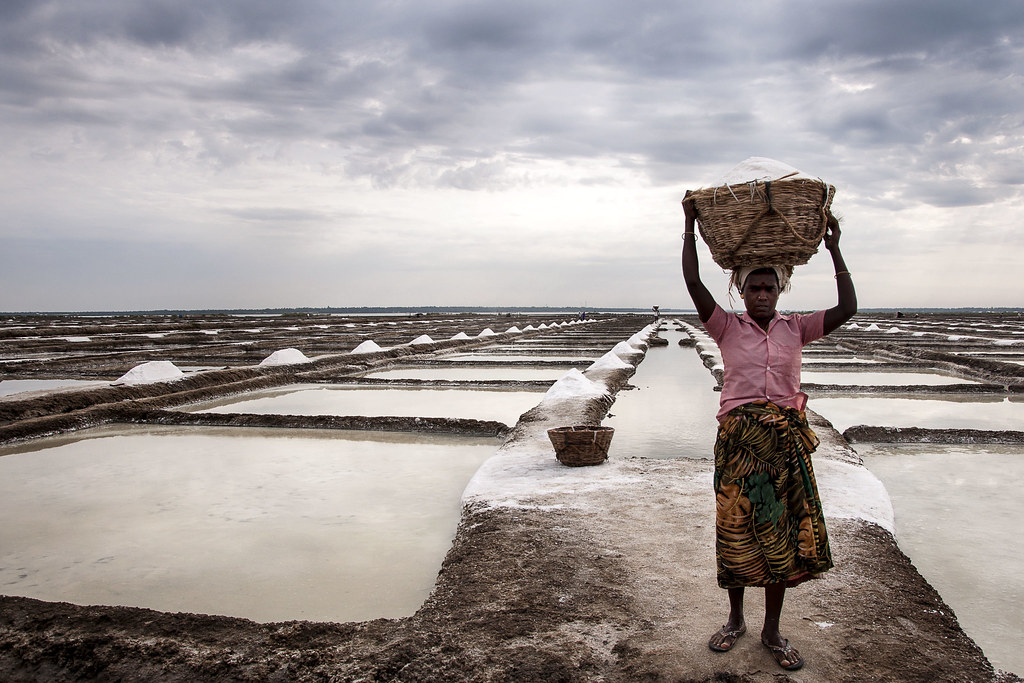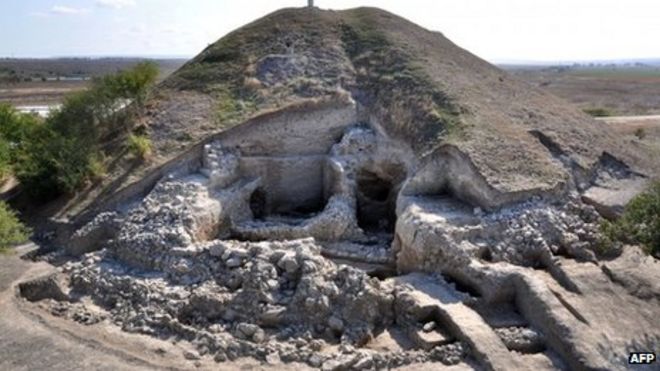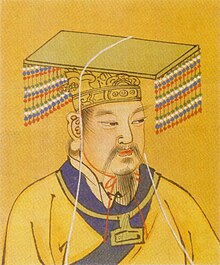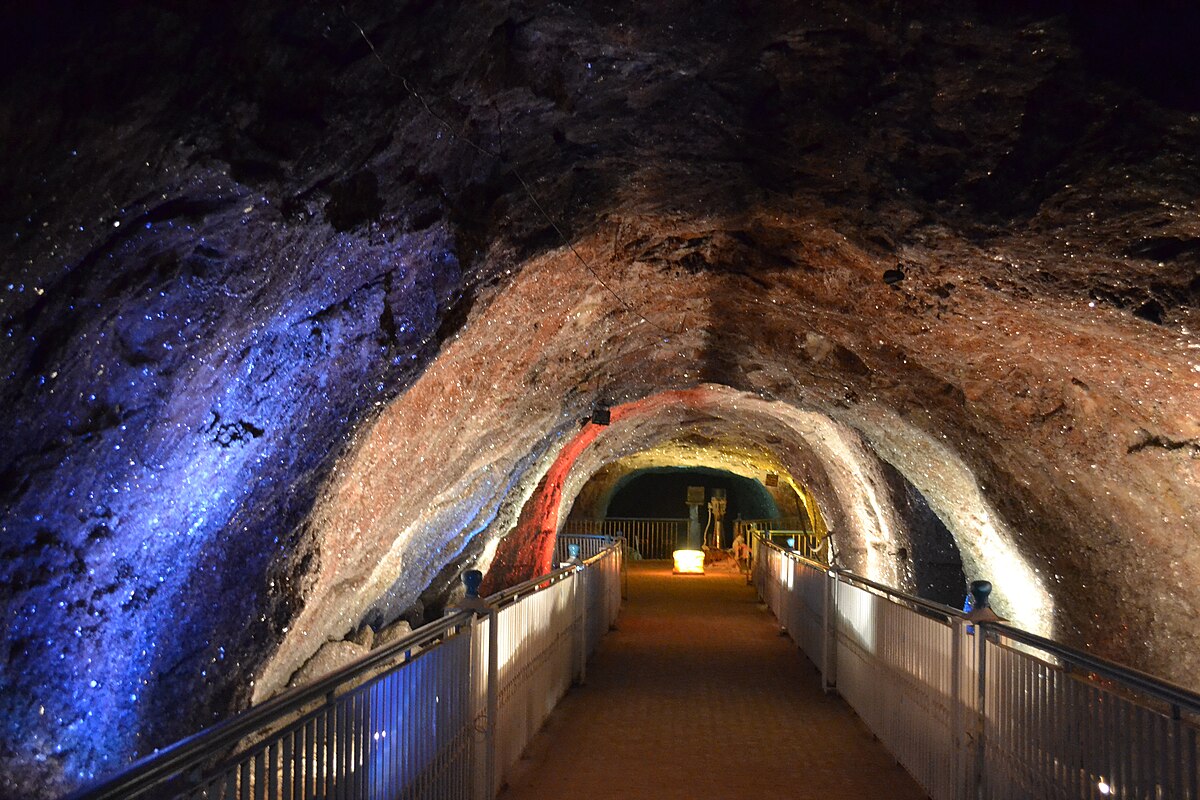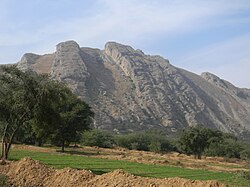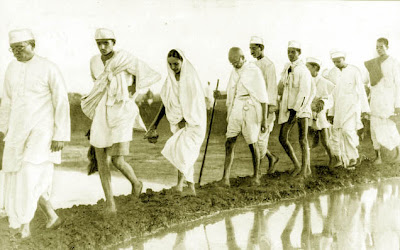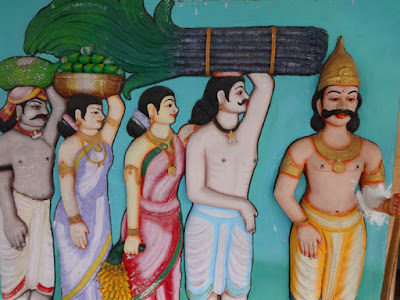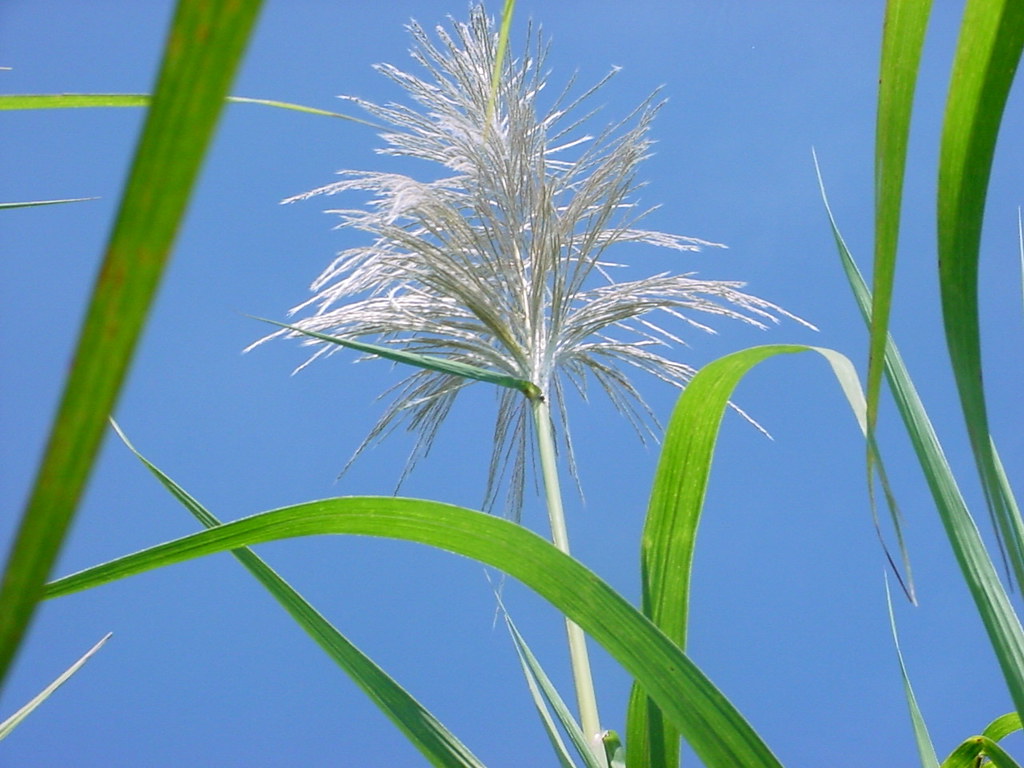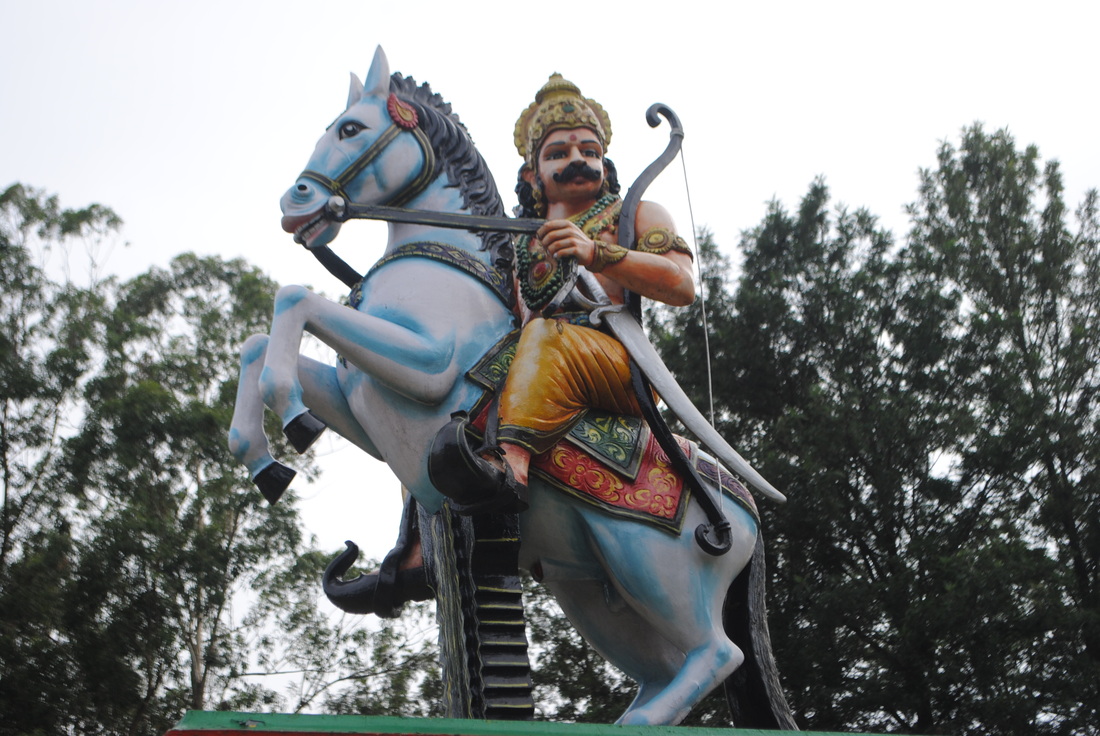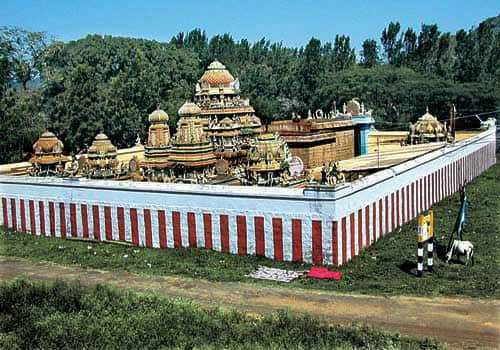Neithal Tinai corresponds to seashore and adjoining terrains. Blue Water Lily Blue Nelumbo or Kuvalai (குவளை) or Kazhuneer (கழுநீர்) or Neithal (நெய்தல்) flower (Nymphae odorata) is mentioned as the native flower and hence the name Neithal Tinai. Lord Kadalon (a.k.a Varunan) was worshiped by the native people. The Neithal terrain is known for seashore and adjoining coastal land dotted with sand well Crocodile (முதலை), shark (சுறா) and Kara fish (காரா மீன்) were native animal and fish. Sea-crow (நீர்க்காகம்), swan (அன்னம்) and Andril (அன்றில்) were the birds. Kandal (கண்டல்), Punnai (புன்னை), Gnazhal (ஞாழல்) trees occupied their terrain. The native music note of the land was Sevvazhi Note (செவ்வாழி பண்) and the drum used was Navay drum (நாவாய்ப்பறை) and the stringed musical instrument was Vilari Lute (விளரி யாழ்).
The salt pan industry was an ancient industry in Sangam period. Neithal people who lived near the sea ventured upon salt production and sale. Salt producers were known as 'Alavars' (அலவர்) and their women as 'Alathiyar.' (அலத்தியர்). They are h
arvesting salt without plowing. (
உவர் விளைவு உப்பின் உழா உழவர். Natrinai 331: 2.) The dark brackish waters produce white salt (இருங்கழிச் செறுவின் வெள் உப்பு விளையும் Natrinai 311:4). The place of salt extraction was known as 'Alams' (அளம்) or Uppalams (உப்பளம்) i.e. uppu (உப்பு) + alam (அளம்). Villages like Kovalam (கோவளம்), Peralam (பேரளம்) etc., got their names due to the presence of salt pans.
Poet Ulochanar (உலோச்சனார்) was a great Tamil poet during Sangam period. He composed 35 poems (Puram 3 and Akam 32). His 31 Akam poems describes about the neithal landscape of the sandy coastal terrain. He has also described about fishermen and fisher-women as well as salt merchants and bartering of salt and fish. In Natrinai poem 354 he describes the process of salt extraction in salt pans and about
long rows of wagons that carry salt crystals.
கடு வெயில் கொதித்த கல் விளை உப்பு
நெடு நெறி ஒழுகை நிரை செலப் பார்ப்போர்
அளம் போகு ஆகுலம் கடுப்ப
Natrinai 354, Ulochanar,
What the heroine’s friend said to the hero. The uproars of the long rows of wagons that carry salt crystals made by the hot boiling sun in salt pans, near the misty seashore with long sandy stretches of groves.
Ulaochanar's Akananuru poem 20 speaks about the drying of salted fish by fisher-women:
பெரு நீர் அழுவத்து எந்தை தந்த
கொழு மீன் உணங்கல் படு புள் ஓப்பி
எக்கர்ப் புன்னை இன் நிழல் அசைஇ
Akananuru 20: 1-3, Ulochanar, What the heroine’s friend said to her, as the hero listened nearby.Our father gave us fatty fish, that he had caught in the huge ocean, to dry. We rested in the sweet shade of a punnai tree growing in the sand, and chased away the marauding birds.
The salt merchants were known as 'Umanars' (உமணர்) and their women as 'Umattiyars' (உமத்தியர்). They traveled with their families with train of bullock carts (
நோன்புகட்டுமணர் ஒழிகை Sirupanatruppadai). Their vast caravans were loaded with salt and hawked door to door and village to village. Salt merchants traveled in groups and reached villages to sell their salt.
ஈங்குப் பிரிந்து உறைதல் இனிதன்று ஆகலின்
அவணதாகப் பொருள் என்று உமணர்
கண நிரை அன்ன பல் கால் குறும்பொறைத்
Akananuru 337, Cheraman Palai Padiya Perunkadunko,
What the hero said to his heart: You brought me alone to the harsh path, where small boulders are like rows of salt merchants’ donkeys that carry load,
Salt merchants traveled with their families in trains of carts.
கொழுஞ்சூட்டு அருந்திய திருந்து நிலை ஆரத்து
முழவின் அன்ன முழுமர உருளி
எழூஉப் புணர்ந்தன்ன பரூஉக்கை நோன் பார்
மாரிக் குன்றம் மழை சுமந்தன்ன
ஆரை வேய்ந்த அறைவாய்ச் சகடம்
வேழம் காவலர் குரம்பை ஏய்ப்பக்
கோழி சேக்கும் கூடுடைப் புதவின்
முளை எயிற்று இரும்பிடி முழந்தாள் ஏய்க்கும்
துளை அரைச் சீறுரல் தூங்கத் தூக்கி
நாடக மகளிர் ஆடுகளத்து எடுத்த
விசி வீங்கு இன் இயம் கடுப்பக் கயிறு பிணித்து
காடி வைத்த கலனுடை மூக்கின்
மகவுடை மகடூஉப் பகடு புறம் துரப்ப
கோட்டு இணர் வேம்பின் ஏட்டு இலை மிடைந்த
படலைக் கண்ணிப் பருஏர் எறுழ்த் திணிதோள்
முடலை யாக்கை முழு வலி மாக்கள்
சிறு துளைக் கொடுநுகம் நெறிபட நிரைத்த
பெருங் கயிற்று ஒழுகை மருங்கில் காப்ப
சில்பத உணவின் கொள்ளை சாற்றி
பல் எருத்து உமணர் பதி போகு நெடு நெறி
(Perumpanatruppadai line 46-65, Poet Nallur Nathathanar. The King Oyman Nalliyakodan)
The Long Path that Salt Merchants take: The wagons of salt merchants have wheel rims which surround perfectly placed spokes, massive wheel hubs made from huge trees, thick, strong wooden axle bars appearing like two fortress gate cross bars united, roofs woven with grass looking like rain clouds carried by the mountains during monsoons, and cages for domestic fowl resembling the huts of guards who protect fields against elephants.
In a wagon, there is a small mortar with holes in the shape of the knees of a cow elephant with tusks like the sprouts of bamboo, that dangles from the cart near the cage.
The salt merchant’s wife, holding her child, is seated on a pickle pot circled with ropes, that resembles the legs of female elephants whose tusks appear like bamboo sprouts, and also resembles the sweet, small drums with holes that are tied with ropes and played when drama actresses dance in dancing arenas.
She hits the oxen on their back and drives the cart, and strong men with thick shoulders and firm bodies wearing garlands made with fine leaves of neem trees with clusters of flowers on branches, walk near the cart with curved yoke with small holes tied properly with large ropes, calling out the price of salt, in the long path that takes the salt merchants owning many bulls, to many towns.
நறவுவாய் உறைக்கும் நாகு முதிர் நுணவத்து
அறைவாய்க் குறுந்துணி அயில் உளி பொருத
கை புனை செப்பம் கடைந்த மார்பின்
செய்பூங் கண்ணி செவி முதல் திருத்தி
நோன் பகட்டு உமணர் ஒழுகையொடு வந்த
மகாஅர் அன்ன மந்தி மடவோர்
நகாஅர் அன்ன நளி நீர் முத்தம்
வாள் வாய் எருந்தின் வயிற்றகத்து அடக்கி
தோள் புற மறைக்கும் நல்கூர் நுசுப்பின்
உளர் இயல் ஐம்பால் உமட்டியர் ஈன்ற
கிளர் பூண் புதல்வரொடு கிலுகிலி ஆடும்
Sirupanatruppadai line 55 - 61, Poet Nallur Nathathanar. The King is Oyman Nalliyakodan
On a wagon pulled by strong oxen, owned by a salt merchant, wearing on his chest a fine garland, carved with an iron chisel from wood pieces from a delicate nunavan tree. A female monkey that is like his daughter plays with a shell rattle stuffed with lovely pearls resembling the teeth of tender women. Its opening a thin slit as narrow as a sword’s sharp edge. His sons wear bright jewels, and their mother, the wife of the salt merchant, is pretty with a delicate waist and swaying five-part braid that hides her back.
உமணர் சேர்ந்து கழிந்த மருங்கின் அகன்தலை
ஊர் பாழ்த்தன்ன ஓமையம் பெருங்காடு
(Kuruntokai 337, Cheraman Palai Padiya Perunkadunko,)
What the heroine’s friend said to the hero: Lord, if you say that it is painful to be in the vast wasteland with huge ōmai forests, resembling large desolate towns where salt merchants join together and leave,
நீரும் புல்லும் ஈயாது உமணர்
யாரும் இல் ஒரு சிறை முடத்தொடு துறந்த
வாழா வான் பகடு ஏய்ப்பத் தெறுவர்
Purananuru 307, Poet Unknown
Like a lame bull abandoned by salt merchants and unable to live without water and grass, he attacked his enemies and took their lives.
- ஓங்கித் தோன்றும் உமண் பொலி சிறுகுடி
Natrinai 374: 2, Vanparanar
There is a small village with salt merchants, which appears to be tall
உவர் விளை உப்பின் உழாஅ உழவர்
ஒழுகை உமணர் வரு பதம் நோக்கி
கானல் இட்ட காவற் குப்பை
புலவு மீன் உணங்கல் படு புள் ஓப்பி
மட நோக்கு ஆயமொடு உடன் ஊர்பு ஏறி
எந்தை திமில் இது நுந்தை திமில் என
வளை நீர் வேட்டம் போகிய கிளைஞர்
திண் திமில் எண்ணும் தண் கடற் சேர்ப்ப
Natrinai 331: 1-8, Ulochanar
Oh lord of the seashore! When salt merchants come to the seashore and sell heaps of salt that is harvested without plowing, delicate-looking young girls who play with their friends as they dry fish and chase birds, climb on the boats on the shore and say, “This is my father’s boat,” “This is your father’s boat,” and count the sturdy boats of their relatives who went fishing in the ocean.
Bartering System
Spatial variations in food production and consumption practices have been noted for thousands of years. Bartering was introduced by Mesopotamia tribes and has been around Sangam period. A barter system, dates all the way back to 6000 B.C., is an old method of exchange. The Sangam people had brisk internal trade. The wholesalers, retailers and hawkers had indulged themselves in brisk trade. Salt was the most popular item exchanged by several civilizations. Sangam people utilized the bartering system to get their food and spiced they needed. Paddy, produced in abundance in South India, was the common medium of exchange.
In the beginning of the Sangam Age, the barter system of trade was followed. Generally, the people exchanged their commodities with their neighbors. For example, the people of Kurinji region exchanged honey with the people of Neithal region for getting fish and salt. Likewise, the Mullai people gave their milk products to Marudham people to get rice from them.
தேனெய்யொடு கிழங்கு மாறியோர்
மீன் நெய்யொடு நறவு மறுகவும்
தீங் கரும்போடு அவல் வகுத்தோர்
மான் குறையொடு மது மறுகவும்
P orunaratruppadai 214 - 217
People barter honey and yams for fish oil and toddy. Those who sell sweet sugarcane and portions of flattened rice, barter
திமிலோன் தந்த கடுங்கண் வயமீன்
தழை அணி அல்குல் செல்வத் தங்கையர்
விழவு அயர் மறுகின் விலை எனப் பகரும்
Akananuru 320, Mathurai Koolavanikan Seethalai Sathanar,
What the heroine’s friend said to the hero The fishermen ride their boats on tall waves in the wide ocean and pull their nets with fierce strong fish, which their rich younger sisters with leaf skirts on their loins sell, calling out prices, on the streets with festivals, in a beautiful village with groves!
மான்ற மாலை மகிழ்ந்த பரதவர்
இனிது பெறு பெரு மீன் எளிதினின் மாறி
Natrinai 239, Kundriyanar,
What the heroine’s friend said to her, as the hero listened nearby Happy fishermen sell their big fish that they caught happily at this confusing evening time. This is a beautiful, small village where crabs play in stinking sand, in the front yards of houses.
பசு மீன் நொடுத்த வெண்ணெல் மாஅத்
தயிர் மிதி மிதவை ஆர்த்துவம் நினக்கே
Akananuru 340, Nakkeeranar,
What the heroine’s friend said to the hero We will feed you gruel made with soft curds mixed with flour from white rice that we got selling fresh fish
Poet Ammoovanar describes in Akahanuru poem 140 about an young women who carried head loads of salt and exchanged for paddy from peasant woman. She shouted Young women also carried head loads of salt and exchanged for paddy from peasant woman.
கதழ்கோல் உமணர் காதல் மடமகள்
சில்கோல் எல்வளை தெளிர்ப்ப வீசி
நெல்லின் நேரே வெண்கல் உப்பெனச்
சேரிவிலை மாறு கூறலின்.
Akananuru 140: 5 - 8, Ammoovanar,
What the hero said to his friend: She walks through the settlement with salt, swaying her hands, jingling her round, bright bangles and shouting, “equal measure of white grainy salt for rice paddy! (சேரி - street; விலைமாறு - Barter)
நெல்லும் உப்பும் நேரே ஊரீர்
கொள்ளீரோ எனச் சேரி தொறும் நுவலும்
Akananuru 390: 8 - 9, Ammoovanar,
What the hero said to his heart, or What the hero said to his friend: Salt merchant's girl went to all the settlements and called out, “Town people! Rice for salt, straight exchange! Will you barter?”
உப்பு நொடை நெல்லின் மூரல் வெண் சோறு
Akananuru 60:4, Kudavayil Keerathanar,
What the heroine’s friend said to the hero, She brings food, white rice she got from bartering salt.
In Pattinappalai poet Kadiyalur Urithirankannanar describes the sturdy boats of salt merchants sailed in backwaters and they carried paddy. The paddy was obtained by salt merchants by bartering salt.,.
குறும்பல்லூர் நெடுஞ்சோணாட்டு
வெள்ளை உப்பின் கொள்ளை சாற்றி
நெல்லொடு வந்த வல்வாய்ப் பஃறி
பணை நிலைப் புரவியின் அணை முதல் பிணிக்கும்
Pattinappalai 28 - 31, Poet Kadiyalur Urithirankannanar, King Cholan Karikalan
Gardens and Groves of Kaviripoompattinam: In the huge Chola country with many small towns, sturdy boats with paddy got by bartering salt, are tied to posts on the shores of the backwaters, like horses tied in a stable.
உமணர் தந்த உப்பு நொடை நெல்லின்
அயினி மா இன்று அருந்த
Natrinai 254, Ulochanar
What the heroine’s friend said to the hero: If you stay, your horses can eat the rice from paddy the salt merchants got selling their salt
